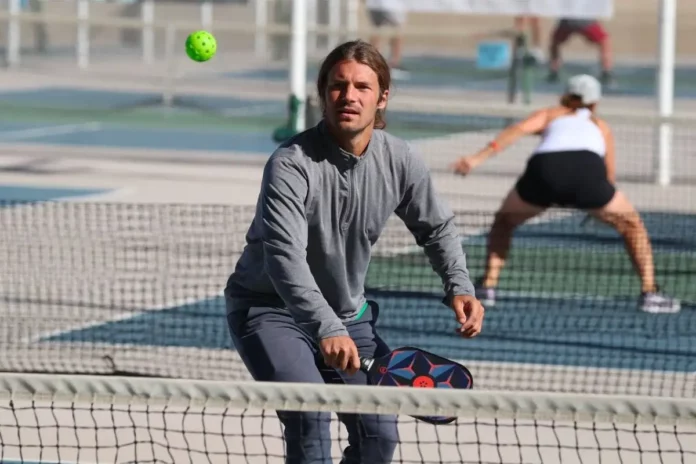Defending the Transition Zone in Pickleball: The transition zone, often referred to as pickleball’s “no man’s land” lies between the baseline and the non-volley zone (kitchen). Spanning 4.5 meters, this area plays a pivotal role in games, and the way pickleball players handle it can make or break their performance. While many rush through this zone, it is essential to understand how to defend within it to avoid costly pickleball mistakes.
Defense in the Transition Zone in Pickleball
The crucial element to defending in the transition zone lies in proper paddle position and stance. A common error pickleball players make is positioning the paddle in front of their chest, similar to their baseline playstyle. However, in this zone, balls typically come at the player’s feet, requiring a different approach.
Key Defense Techniques
To ensure proper defense in the transition zone in pickleball:
- Keep the Paddle Low: Lower the paddle to prepare for low shots.
- Set the Feet: Position the feet in a wide, balanced stance with knees bent for quick reactions.
- Let High Balls Go: Balls that approach the chest are likely going out, so focus on defending the lower shots near the feet.
Common Mistakes to Avoid in the Transition Zone
Mastering the transition zone in pickleball involves recognizing and avoiding these typical mistakes:
- Paddle Position Too High: Raising the paddle too high slows down reaction times. It’s better to keep it low, especially for low shots.
- Rushing Through the Zone: Hurrying through the transition zone after hitting a shot can lead to poor positioning. A split step can help with better positioning when the opponent prepares to hit.
- Perfectionism in Shot Placement: Trying for overly precise drop shots often leads to errors. A loftier shot is preferable, giving time to get into position.
Pro Tips to Conquer the Transition Zone in Pickleball
Professional pickleball players offer valuable advice on handling the transition zone in pickleball:
- Anticipate the Shot: Watching the shot play out allows players to prepare for what’s coming next. A high or attackable shot signals a defensive stance, with a low, wide position.
- Embrace the Backhand: Using the backhand is a favorite technique for many professionals, as it offers better reach and adaptability to low shots.
- Keep the Swing Short and Controlled: Overcommitting to big swings can lead to mistakes. Instead, a shorter, controlled swing with topspin helps maintain control and consistency.
Expert Opinions on Transition Zone Play
Experienced players provide insight on strategies for managing the transition zone effectively:
- Attacking from the transition zone is a bad strategy. – Rushing for a quick attack is risky. It’s wiser to place the ball in a safe spot and move to a stronger position at the kitchen line.
- Shorten the backswing and reduce power. – A controlled, softer shot with a shorter backswing is more effective for handling low balls.
- Add topspin for control. – Applying topspin keeps the ball low and more difficult for opponents to return effectively.
Turning the Transition Zone into a Strategic Advantage
The transition zone in pickleball does not have to be a dreaded area. By focusing on proper paddle positioning, footwork, and shot selection, players can take advantage of this space instead of succumbing to it.
Mastery of these pickleball strategies will lead to more consistent performances, allowing pickleball players to win points from what was once a challenging area.
News in Brief: Defending the Transition Zone in Pickleball
The transition zone in pickleball is a crucial area that can often decide the outcome of a match. Players can gain an advantage by refining their defense within this zone through proper paddle positioning, footwork, and shot selection.
Avoiding common mistakes like rushing through the zone or using an overly high paddle will increase a player’s effectiveness. Pro players recommend techniques such as using a backhand, shortening swings, and adding topspin to control the ball and create opportunities to move to the net.
ALSO READ: How to Dominate the Pressurized Zone in Pickleball and Outplay Your Rivals


